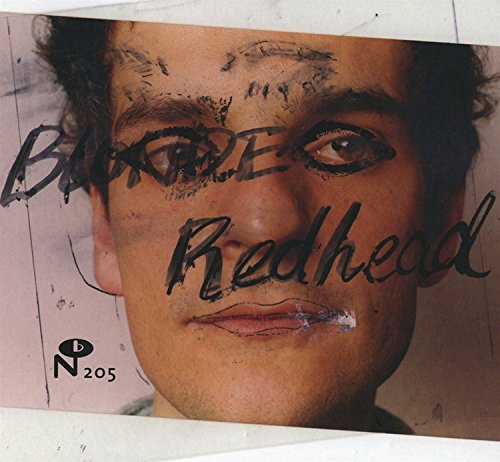THE COST OF CDS INVETSIGATED: We were just poking about in the RIAA's website, and we came across a fascinating article. It's supposed to be an answer to the question 'What costs go into making a CD?' - although, of course, there's no attempt to actually sit down and put some numbers into this. Let's listen and learn, shall we?
A typical music fan who buys a CD might use that CD at home, take that CD in the car, make a tape of that CD, or using it as part of a compilation, play that CD with friends and for friends, and keep that CD for many years.
Hang about a minute... how come the RIAA is so blase about people making tapes from CDs? Is this the same organisation so attached to the concept of copy-protection that it doesn't mind putting out records which cause standard CD players to lock-up? The representative body of the major labels in the US? They're relaxed about us taping our CDs? Now, can anyone explain to me any iota of difference between making a copy of an album on a tape, and making a copy of an album on a CD? There's none whatsoever.
That's probably why most consumers, when asked, describe CDs as a good value.
Most consumers in the US, of course, buy less than two CDs every year, and so its not like the price of CDs is going to be a major problem to them, in the way that avid music consumers may find it. Surely if CDs were such good value the pricepoint would move sales upwards?
At the same time, when asked directly whether CDs cost too much, some consumers will say yes!
That's got to hurt, hasn't it? Ungrateful whelps.
Why the contradiction? Because some consumers don't understand why the sales tag on a CD is so much higher than the cost of producing the actual physical disc, a cost, which in fact, has decreased over the years.
Why would that explain the contradiction? It might explain why consumers feel there's an enormous whack of profit being made off CDs whenever they get sold, but not why people think they cost too much at the same time as feeling they're good value. What we understand from that finding is that, while people think the purchase of a CD is worth it, they're priced so highly they can't afford to buy as many as they'd like to. This has nothing to do with whether they understand or not that there's more to a CD than the cost of a thin plastic disc (although that's rather than a patronising assumption - are American consumers that stupid? Do they sit in restaurants querying why when they could buy a steak for a buck, having it prepared and cooked and served costs more? We doubt it.)
While the RIAA does not collect information on the specific costs that make up the price of a CD, there are many factors that go into the overall cost of a CD -- and the plastic it's pressed on, is among the least significant. CD manufacturing costs may be lower, but it takes more money than ever before to put out a new recording.
Oh, it does, does it?
Of course, the most important component of a CD is the artist's effort in developing that music. Artists spend a large portion of their creative energy on writing song lyrics and composing music or working with producers and A&R executives to find great songs from great writers. This task can take weeks, months, or even years. The creative ability of these artists to produce the music we love, combined with the time and energy they spend throughout that process is in itself priceless. But while the creative process is priceless, it must be compensated. Artists receive royalties on each recording, which vary according to their contract, and the songwriter gets royalties too. In addition, the label incurs additional costs in finding and signing new artists.
This really would be better performed by a man with specs in a white lab coat, wouldn't it? All those artists bevearing away for :weeks, months, or even years" - or, in the case of Robbie Williams, a couple of afternoons. They must be compensated - and writers, as well. Cash for all. Let's leave aside the number of artists who have very strong cases that they've not been compensated at all for their work, or under-compensated, or just plain old ripped off for their creative processes. Instead lets just be mathematical: don't royalties usually come in the form of a percentage of total sales? So, while this contributes to the total cost, if the price of CDs falls, so does the artist's take.
Once an artist or group has songs composed, they must then go into the studio and begin recording. The costs of recording this work, including recording studio fees, studio musicians, sound engineers, producers and others, all must be recovered by the cost of the CD.
Well, naturally. That's only fair. But a lot of these are fixed costs, aren't they? So the cost per disc will fall according to the number of CDs sold...
Then come marketing and promotion costs -- perhaps the most expensive part of the music business today. They include increasingly expensive video clips, public relations, tour support, marketing campaigns, and promotion to get the songs played on the radio.
You might raise a weary eyebrow that they seem to be proud they spend more time, effort and money on flogging the records than they do actually making the things. You may also want to ask if perhaps someone should start to ask how much of all this marketing activity is neccesary.
For example, when you hear a song played on the radio -- that didn't just happen!
Excuse me while I feel like I'm being spoken to as if I was six. Actually, being luckily able to listen to stations where the music is chosen by - whisper it - djs who go out and buy records - a lot of the time it is where I am. But what are you alluding to, RIAA guys? That you're paying money to get records played on the radio? Is this an admission that those shady guys who are buying all that survey information from Clear Channel are actually spending that money in order to get slots on air? Surely that would be payola, wouldn't it?
Labels make investments in artists by paying for both the production and the promotion of the album, and promotion is very expensive. New technology such as the Internet offers new ways for artists to reach music fans, but it still requires that some entity, whether it is a traditional label or another kind of company, market and promote that artist so that fans are aware of new releases.
"Some entity"? What, like a cyborg promo machine or something? And haven't you neglected to mention that bit about how new media promotions are so much cheaper - where once you used to have spend cash getting word out, now you assemble a couple of manky Street Teams, give the odd kid a free tshirt, and in return don't even have to spend your own time sending badly phrased spams to uninterested mailing lists?
For every album released in a given year, a marketing strategy was developed to make that album stand out among the other releases that hit the market that year. Art must be designed for the CD box, and promotional materials (posters, store displays and music videos) developed and produced. For many artists, a costly concert tour is essential to promote their recordings.
The news that nowadays, it's possible to tour AND turn a tidy profit doesn't seem to have reached the RIAA yet. Isn't it cute, though, to imagine every single album being given a little brown notebook with a unique marketing strategy inside, rather than a dull template applied to a few and some others left to just sit in racks and fester. C'mon, how many truly inspired marketing ideas have you seen for albums? Floating Michael Jackson down the Thames... erm, we're sure there's others. But if you're trying to tell us that - for a multi-million selling album like, say, Britney, the marketing plan of "some telly... release a single with a video... a couple of ads in the trade papers... some ads in teen girl mags... and thats pretty much it" works out at more than a cent a piece, we're not having it.
Another factor commonly overlooked in assessing CD prices is to assume that all CDs are equally profitable. In fact, the vast majority is never profitable. Each year, of the approximately 27,000 new releases that hit the market, the major labels release about 7,000 new CD titles and after production, recording, promotion and distribution costs, most never sell enough to recover these costs, let alone make a profit. In the end, less than 10% are profitable, and in effect, it's these recordings that finance all the rest.
This is one of those things that - far from being overlooked - is repeated so often by the Record Companies that you'd almost think they were charitable institutions.
And, I'm sorry, but it just doesn't wash.
All industries have failed products - whether its cars that scared horses or attempts to bring Tuna and Baked Beans together in the same tin can. But the fact that, say, Heinz tests and then abandons probably dozens of product ideas a year worldwide doesn't mean we've winded up paying GBP2.50 for a tin of spaghetti hoops, mainly because Heinz knows how much it can afford to risk on product development, and budgets that in to its prices.
If the big labels are losing so much on 90% of their output, you really have to question if they have a single, shining clue what they're doing. They behave as they're a proper industry, and yet their figures show again and again that the Coporate Music Industry is run by a bunch of chancers. If your greengrocer stocked up with racks and racks of thistles and horseradishes, and as a result charged ten quid for a pound of spuds to cover the costs of the stuff they're chucking away, you might take him to one side and suggest he considers retraining as something else. Nobody would expect every album released to be a massive worldwide hit, but to have a nine out of ten failiure rate is ridiculous; to say - in effect - "we're so bad at our jobs, you have to pay nine times as much for a record as you really should" and think that's acceptable is outrageous.
Clearly there are many costs associated with producing a CD, and despite these costs the price of recorded music to consumers has fallen dramatically since CDs were first introduced in 1983. Between 1983 and 1996, the average price of a CD fell by more than 40%. Over this same period of time, consumer prices (measured by the Consumer Price Index, or CPI) rose nearly 60%. If CD prices had risen at the same rate as consumer prices over this period, the average retail price of a CD in 1996 would have been $33.86 instead of $12.75.
Hang about a second - the reason why the price of CDs has fallen so sharply between 1983 and 1996 isn't because a generous recording industry started price cutting in the consumers interest - 1983 was the dawn of CDs when there were very limited production facilities, and they were aimed clearly at a luxury market - so all CDs were full price. Since then, with a massive increase in supply of pressing plants and the spread of the format to become the main music delivery method on the planet, costs fell like a stone and mid and low price Cds started to reach the market. A better comparison would be the price of a vinyl album in '83 and a CD in '96, which doesn't look quite so generous. The comparison with the CPI is a red herring.
While the price of CDs has fallen, the amount of music provided on a typical CD has increased substantially, along with higher quality in terms of fidelity, durability, ease of use, and range of choices, including multi-media material, such as music videos, interviews and discographies. Content of this type often requires considerable production expense and adds a whole new dimension that goes beyond conventional audio.
The amount of music has increased? Pity the creative industry that measures its achievements in minutes and seconds rather than quality of the music. And while this might be true in America, let's not forget that the industry lobbied in the UK to enforce a reduction across all singles releases from four tracks to three tracks. And don't try and kid us that a few simple flash animations and the scanning in of a couple of stills add greatly to production costs. Putting on videos may have a cost, but... haven't you already claimed the cost of producing these videos back in marketing? Or do you have to recreate the video from scratch all over again if its for a CD? It's not even as if putting extra stuff on makes the CD any heavier to transport round the country...
In contrast, CD prices are low compared to other forms of entertainment and one of the few entertainment units to decrease in price, even though production, marketing and distribution costs have increased.
Apart from VHS videos, DVDs and even computer games, of course. And have production havent increased, have they? Surely the cost of making the plastic CD, pressing and so on has fallen, while the costs of creativity are variable depending on the whos, the whats, and the whys...?
In a USA Today article entitled, "Spending a Fortune for Fun: The cost of entertainment is rising along with our willingness to pay it ," the reporter observes, "though some factions of the industry see price resistance -- CD prices are relatively low and home videos rentals are still a bargain -- consumers don't seem to balk at the rising price of fun in this strong, family-friendly economy." The prices of other forms of entertainment have risen, on average, more rapidly than has music or consumer prices, with most admission prices for other forms of entertainment having increased more than 90% between 1983 and 1996.
Ah, the USA Today viewpoint. Who's ever heard of them being wrong? But didn't we start off this trip with the RIAA saying that some consumers do balk at the costs. And haven't we just been told that CD prices are getting cheaper, whereas USA Today is talking of rising prices? It's almost as if they couldn't find a better quote to support their case, isn't it?
By all measures, when you consider how long people have the music and how often they can go back and get "re-entertained" CDs truly are an incredible value for the money.
A survey a few years back found that the average number of times each CD gets played in America is less than once. So, while theoretically it could work out at less than a cent per minute of entertainment, often it's bucks and bucks for the same time.
Interestingly, this whole piece misses out entirely the costs of distribution, and storeage and so on - all the aspects associated with the physical CD itself, in fact. Surely this isn't because the RIAA fears in an economy that shifts to electronic distribution, where the retail price per track is identical or more than the same price today, that any patronisingly written paragraph about how "many consumers seem to forget that the CDs have to be packaged in big cardboard boxes and get driven in large vehicles we call lorries to shops and warehouses - none of this is free!!" may be waved at them to ask why?
Tuesday, October 29, 2002
Subscribe to:
Post Comments (Atom)









No comments:
Post a Comment
As a general rule, posts will only be deleted if they reek of spam.